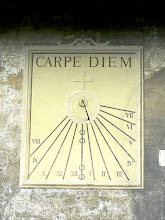A MARS ROVER NAMED "CURIOSITY"


FOTOS (artist's concept of):
Curiosity's descent to Mars.
" vaporizing a patch rock for analysis.
A MARS ROVER NAMED "CURIOSITY"
______________________________
October 30, 2009:
If you found your grandmother's diary, tattered and dust covered, up in the attic, would you read it?
Of course you would!!!....Granny was a pistol!!!
Brush off the dust, open up the little book, and foray into her lively and interesting past.
Dust cloaks some fascinating tales in other places, too.
NASA scientists will soon brush the dust off some Martian rocks that are practically bursting their seams to give their lively account of the red planet's past.
The Mars Science Lab -- aptly named "Curiosity" -- is heading up there in 2011 to read the diary of Mars.
The small, car-sized rover will ramble about on the rocky surface, gizmos at full tilt, not only brushing dust off rocks but also vaporizing them with a laser beam, gathering samples to analyze on the spot, taking high resolution photographs, and more.
"Curiosity" will be prospecting for organic molecules, the chemical building blocks of life, in order to find out whether Mars' environment was, or still is, capable of harboring life.
To answer the question: 'Is there life on Mars?'
The most reasonable and productive approach is to look for organic compounds, which could be from life past or present, or from meteorites.
If you find anything, you know you're in a region that could preserve evidence of life, if there was any.
We have maps from our orbiters, but we don't know which of the promising looking regions actually contains anything, much less the mother lode.
The rock record is of particular interest.
It has a record from billions of years ago and can answer questions like 'Where and for how long might Mars have been habitable?'
'Was it cold or warm there in the past?'
'Was the water there acidic or salty?'"
"Curiosity" will be the first red planet rover since "Spirit" and "Opportunity".
Though it would be hard to match the twins' toughness, "Curiosity" will have a much greater range, more instruments, and a bigger, stronger robotic arm.
It will be nuclear powered instead of solar, so there will be no worries about dust on solar panels causing energy supplies to plummet.
It will have much more power, more consistently.
"Curiosity" will even land in a new fashion.
"Spirit" and "Opportunity" were sitting on top of a lander that hit on the surface and bounced, protected by airbags, before coming to rest and opening up.
They then had to drive off the top of the lander. A descent stage called Sky Crane will gently lower Curiosity (no airbags needed) via cables, which will be cut once the rover's wheels set down.
The most important difference is that Spirit and Opportunity aren't analytical labs they are more for observing.
This newest rover will be performing a more comprehensive study of the Martian environment.
Remote sensing instruments located on Curiosity's mast will scout around for promising targets and perform some long-distance analysis before the vehicle moves in for a closer look.
Curiosity will have a laser on its mast that can take aim at a rock and vaporize a small spot on it.
This produces a plasma cloud that tells us about that rock's chemistry.
We'll look at the light reflected off the cloud to characterize rocks and soils from up to 9 meters away.
We’ll be able to classify minerals, ices, and organic molecules without having to drive as much.
The mast also sports a high-resolution camera called, naturally, Mastcam.
It will observe, photograph, and videotape geological structures and features, like craters, gullies, and dunes.
The rover's robotic arm wields its own unique instruments:
APXS, the Alpha Particle X-Ray Spectrometer, will measure the abundance of chemical elements in the dust, soils, rocks, and processed samples.
MAHLI, the Mars Hand Lens Imager, will return color images like those of typical digital cameras and act like a geologist's magnifying lens.
Its images can be used to examine the structure and texture of rocks, dust, and frost at the micrometer to centimeter scale.
One laboratory instrument inside the rover's body will explore the red planet by "sniffing" the air, bird-dog style.
SAM, short for Sample Analysis at Mars, has vents that open to the atmosphere to determine where to take samples, for example if it detects methane in the area.
That's important because methane can be released by microbes,or by liquid water reacting with rock at depths under the surface.
Water 'down under' could be a niche for subterranean life.
SAM can also be used to sniff the gases released after baking a rock or soil sample in its oven.
In addition, "Curiosity" will carry instruments for observing Martian weather
amd measuring cosmic radiation, bombarding the planet's surface.
This rover is intrinsically spectacular in terms of what the mission will do.
It's a keystone for the future.
It sets the stage for understanding whether organics are preserved on Mars and will tell us what we need to use to find out.
Now – where's that diary?
=================================


0 Comments:
Post a Comment
<< Home